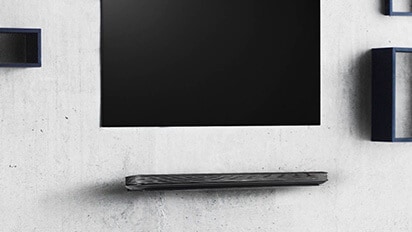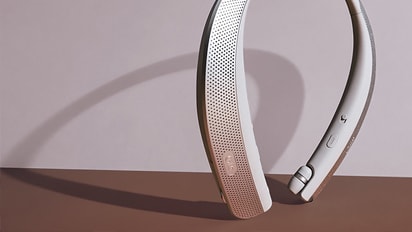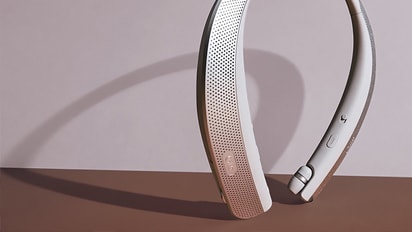Were you looking for Blu-ray/DVD Drive/Burner (Firmware, Software, and Drivers) - Digital Storage? (click to go there)
This article provides information about system and file backup options.
Windows 10 features a few methods of protecting your system against potential corruption, virus, or other serious system errors. As long as the error(s) are not related to hardware failures, these options will help to get you back up and running if your PC crashes.
These options include creating a Repair Disc, which can solve some Windows related issues, creating a Recovery Drive, which can restore your PC to factory settings, creating a Restore Point, which allows you to revert your system back to how it was at a previous point in time, and setting up File History, which backs up personal files to an external or network drive.
Note: Windows 10 is designed to automatically repair issues that prevent it from booting correctly. These options give you additional methods to repair the PC if Windows is unable to automatically solve the issue.
A Repair Disc provides the advanced startup options that are built-in to Windows 10. When the PC will not boot, having this disc can be a life saver.
To create a repair disk you'll need an external CD/DVD Writer/Burner and a blank CD or DVD. Creating the disc requires about 330 MB of free space.
Note: This disc will not contain a Windows system image, so if your version of Windows is too heavily damaged, you may not be able to restore using this disc.
To create a Repair Disc:
Type backup and restore into the Search area of the Taskbar (bottom-left), but do not press enter.
Instead, use your mouse to click the option that says Backup and Restore (Windows 7).
This will bring you to the Backup and Restore area of the Control Panel.
If you look in the Left Margin (where the arrow is pointing), you'll see an option that says Create a system repair disc.
Click this link and, if prompted, click Yes to the UAC (User Account Control) box that pops up.
Make sure you have a blank CD or DVD inside of a CD/DVD Writer/Burner, attached to the PC.
Once the disc is properly inserted into the Writer/Burner, click the Create disc button.
Once the disc is complete you will be prompted with this message.
Even if you have very few discs, and think that it will be easy to remember what this is for, after time passes it is easy to forget.
It is highly recommended to label the disc as the prompt states, in this case Repair disc Windows 10 64-bit.
Note: Use a permanent marker, or another writing utensil with a soft tip. Pens, pencils, etc. will damage the disc.
A Recovery Drive is the best option for keeping a backup of Windows 10. This drive will contain a system image, which will allow for a full restore, even if Windows is damaged beyond repair.
To create a Recovery Drive, you will need a USB drive with at least 8 GB of free space. These drives (not included with the PC) are fairly inexpensive, and are highly recommended for backing up your system.
Note: The Recovery Drive will delete the entire USB Drive first, so it should be purchased for this specific purpose, and nothing else.
To create a Recovery Drive:
Type Create a recovery drive into the Search area of the Taskbar (bottom-left), then press Enter on your keyboard.
After typing the phrase above, you can also use your mouse to click the item that says Create a recovery drive from the Best Match list at the top.
The Create a recovery drive window should have opened (if not, repeat the previous step).
Make sure the box is checked for Back up system files to the recovery drive.
Click Next to proceed.
If you have more than one USB drive attached, select the one you want to use from the Available drive(s) list.
Caution: This will delete everything on the drive before creating the backup. Make sure to remove any files that may be on the drive.
Click Next to proceed, then follow any prompts that appear.
Once the Restore Drive finishes installing, safely remove the USB drive, label it, and store it in a safe place.
To safely remove the USB drive:
- Click the Carret
icon in the Notifications are of the Taskbar (bottom-right).
- Right-click the USB
icon.
- Click Eject USB Drive, then remove the USB drive.
Creating Restore Points often is recommended. These act as a snapshot of your computer at the time they are created.
If you contract a virus, or install a corrupted program/app, restoring to a previous time prevents you from losing everything and starting over.
Nothing additional is required to create a restore point. In fact, Windows already has space allocated for restore points. As this space fills up with new restore points, older ones are automatically removed.
To create a System Restore Point:
Type Create a restore point into the Search area of the Taskbar (bottom-left), then press Enter on your keyboard.
After typing the phrase above, you can also use your mouse to click the item that says Create a restore point from the Best Match list at the top.
The System Properties window should have opened to the System Protection tab (if not, repeat the previous step).
This screen is not the most intuitive, so pay close attention to where you click.
Click the Create button, next to the phrase Create a restore point right now for the drives that have system protection turned on.
Note: Don't worry, the main drive always has protection turned on by default. It can only be turned off if you specifically change the setting.
Choose a descriptive name for the Restore Point. The time and date are added automatically, so they do not need to be part of the name you choose.
Once you choose a name, click the Create button, and you're done!
It's so easy, there's no reason not to do it often, especially before installing any new programs or making changes to the computer.
Setting up File History is a great way to make sure all of your files stay safe. This is what your friends and family are talking about when they say to back everything up to as many places as possible.
Windows 10 File History uses an external hard drive for its backup functionality, which ensures your files will be available even if the Internet is not.
This requires an external hard drive (not included with the PC) with a large enough capacity to hold your current files, and files that you will accrue in the future.
Note: It is recommended to also backup your files to at least one web server, in case of unforeseen damage to your home. If you were to experience a flood, for example, your computer and the external hard drive may be damaged beyond repair.
To setup File History:
To access the new Settings menu:
- Open the Start Menu by clicking the Start
icon from the Taskbar.
- From here, click the Settings
icon (bottom-left).
Here you'll find several categories of PC settings.
Click on Update & security.
From the Update & security menu:
- Choose Backup from the left margin.
- Click the Add a drive
icon, under the Back up using File History heading.
- Choose the drive you wish to use for backing up your files from the pop up list.
You can customize how your files are backed up, such as how often the backup occurs, which folders are included in the backup, and which folders are excluded.
To view these settings, click More options (where the arrow is pointing).
Here you have several options. The most used include:
- How often to back up files and how long to keep them. The default values are to back up your files Every hour, and to keep them Forever.
- Add a folder to be included in the backup. The default folders encompass most of the PC, but if you have any folders in strange places, you may need to add them here. Included folders are listed below.
- Exclude folders from the backup for convenience purposes. This may be useful if you have several folders with My Documents, where you want to back them all up except one. Instead of including each subfolder except the one you want excluded, you can include the entire My Documents folder, but exclude a single sub-folder.












